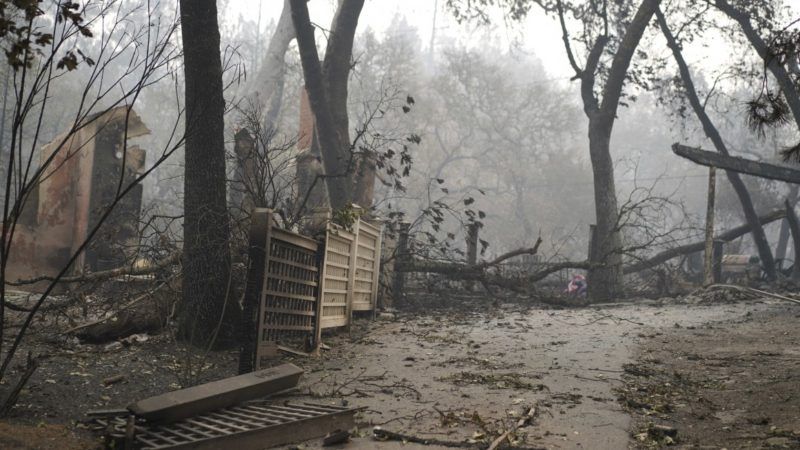Dozens Died in California Wildfires. Why Is the State Forcing Insurance Companies To Ignore Risks?
The state's insurance commissioner forbids the canceling of policies for homes in risky areas.

California was besieged by wildfires all summer, torching more than 4 million acres of land, leaving thousands without homes and 31 dead.
While wildfires are a common occurrence in the Golden State, 2020 is wrapping up to be the harshest in modern history, a result of a mix of climate change, poor forest management, and citizens' insistence on moving into wooded areas prone to fires.
Unfortunately, California seems hellbent on prohibiting market solutions from fixing that third problem. The state's insurance commissioner has announced that the state is mandating that companies that provide fire insurance cannot drop coverage of properties within the areas affected by wildfires. This is the second year in a row he has done so.
This counterintuitive announcement by Commissioner Ricardo Lara is the result of a state law passed in 2018 that forbids insurance companies from canceling or refusing to renew policies of a residential property for a year after a declaration of emergency on the basis of the property being in an area in which a wildfire has occurred. Lara was actually the primary sponsor of the bill when he was a state senator, so while his hands are technically tied here, he's directly responsible for this legal state of affairs.
This is a terrible law and an unethical one at that. The marketplace has efficient tools for discouraging building homes in dangerous environments. When insurance companies refuse to insure people who live in places prone to fire, flooding, or other natural disasters, the market is sending consumers a very important message: "It's not safe to live here. If you make the decision to ignore this warning, we're not going to be fiscally responsible for your choices."
Lara's law subverts these market signals and turns insurance into, essentially, a form of state-enforced financial subsidy. The consequences for bad outcomes are both likely and well-known. Requiring insurance companies to continue covering these properties will encourage people to continue to live and build in places where it's dangerous. Again, 31 people died as a result of these fires, and Lara's primary interest is making sure that homeowners apparently don't learn anything.
Lara's press release trumpeting the moratorium is clear that the goal is to keep people living in these places, even if they're at risk from future wildfires. The announcement features quotes not from insurance companies, but from consumer advocates who don't think it's fair to lose their fire insurance coverage just because they're at increased risk of having their homes catch fire.
"This moratorium ensures that families whose homes survived the flames do not lose their homes because insurers refuse to continue their coverage. With insurance, we pay year after year even though we hope never to need it, and California law helps make it a fair deal by saying that insurers cannot suddenly drop us just because a fire got close," said Douglas Heller, of California's Consumer Federation of America, in Lara's press release.
A "fair deal" for whom, exactly? It's not a fair deal for the insurance companies, who are now essentially being forced to subsidize dangerous practices. But this is a consistent problem with the role insurance is supposed to play in the market (assessing risk and pricing protection and recovery assistance accordingly) and what consumers think the role of insurance is supposed to be (a piggy bank you pay into that will then cover all expenses in the event of disaster).
The Los Angeles Times notes that these demands from California are causing insurance providers to "spike premiums or flee the marketplace altogether." Reports from the state's Department of Insurance determined that there's been a tripling of the number of people complaining about getting dropped by their insurance companies in areas prone to wildfires and complaints about premiums increasing have jumped more than 200 percent between 2010 and 2016.
And yet, the paper notes, people continue to build homes in parts of the country that are prone to wildfires. A report from the National Academy of Sciences found a 41 percent growth in housing near areas of wildland growth across the United States from 1990 to 2010.
People who decide to move to or live in areas that are at risk of wildfire should be free to do so, but it's not the role of the government to shield them from an appropriate market assessment of the risks of doing so. California's actions are actually fostering dangerous housing choices—ones which may lead to more deaths down the line—by getting in the way of very important market signals.


Show Comments (73)